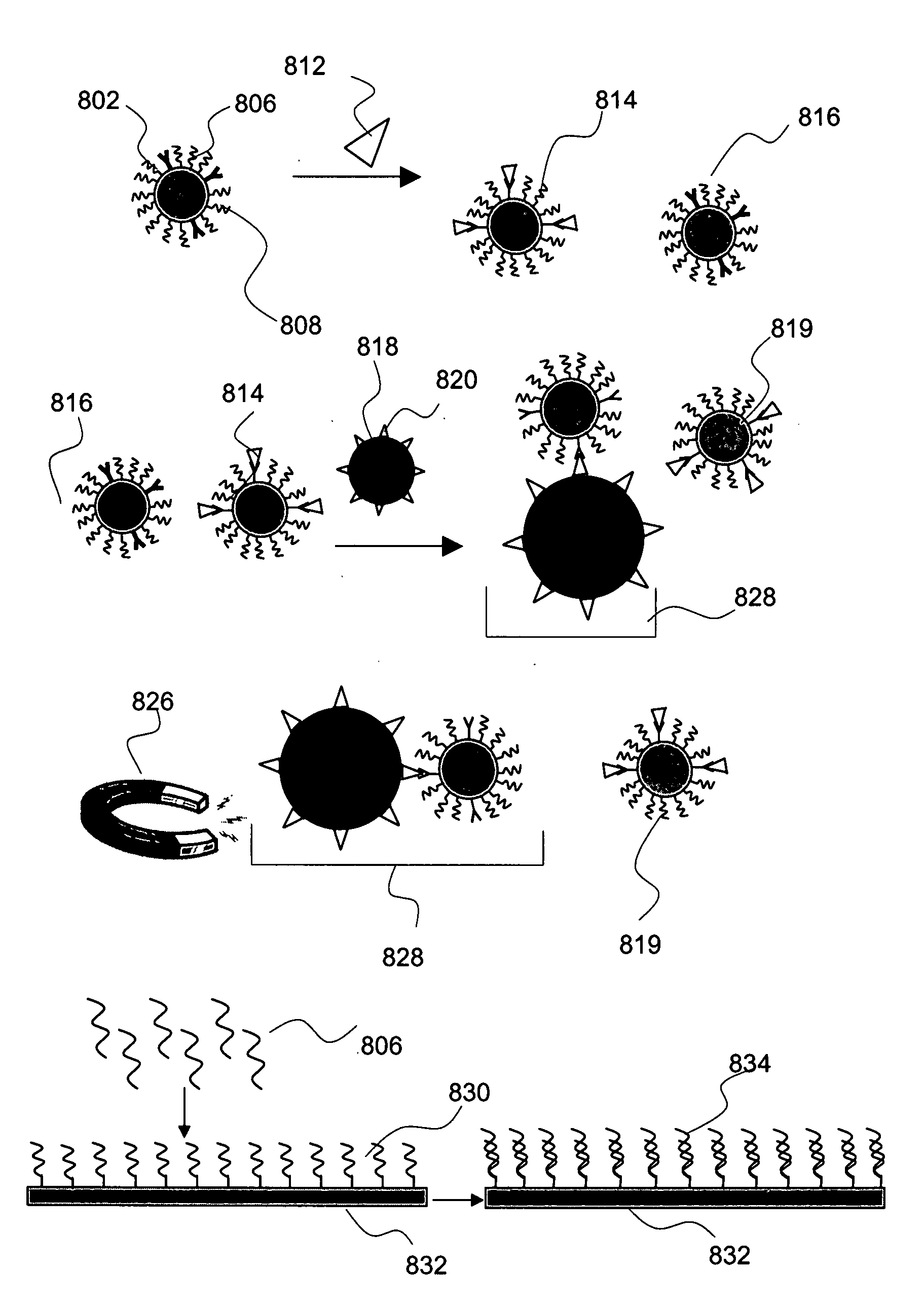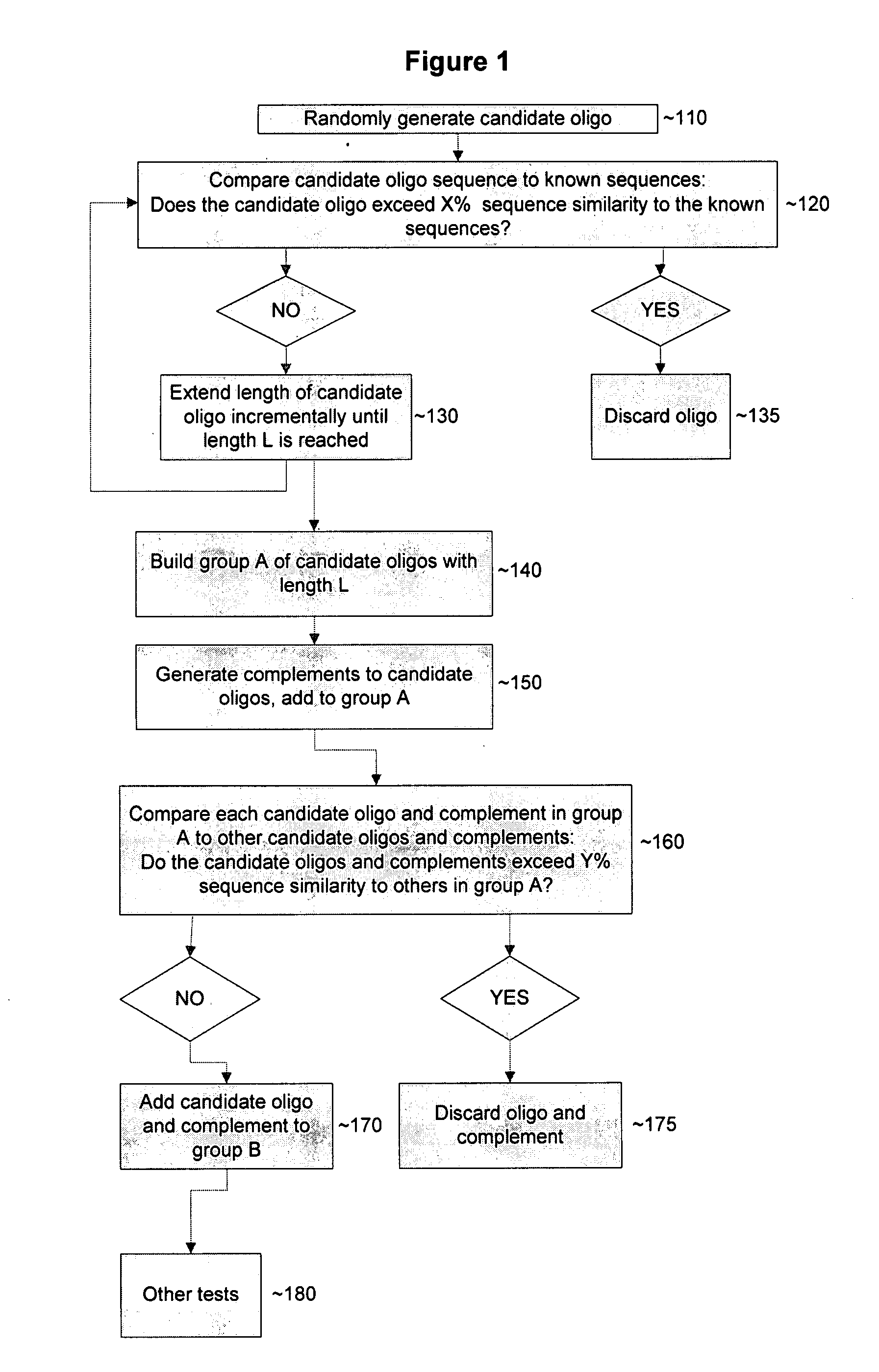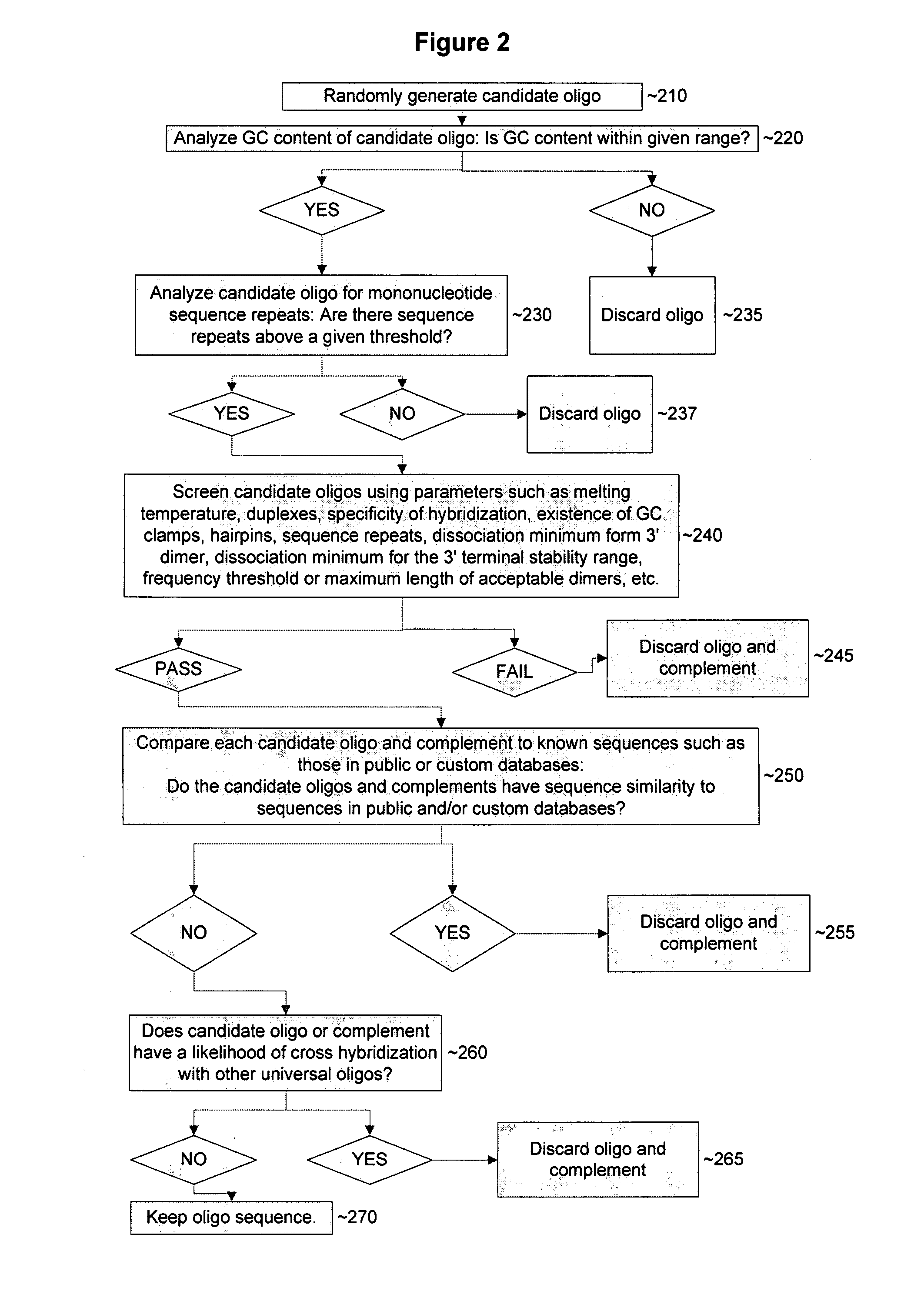Device and methods for detecting and quantifying one or more target agents
a technology of target agents and devices, applied in the field of devices and methods for detecting and quantifying one or more target agents, can solve the problems of difficult detection of more than a single agent in a sample in a short time period, pcr can suffer from non-specific amplification of non-targeted nucleic acid sequences, and none of the above problems have been as widely accepted as pcr
- Summary
- Abstract
- Description
- Claims
- Application Information
AI Technical Summary
Benefits of technology
Problems solved by technology
Method used
Image
Examples
example i
Preparation of Monoclonal Antibodies
[0277]A peptide corresponding to amino acid residues in a desired antigen is synthesized with a peptide synthesizer (Applied Biosystems) according to methods known in the art. The peptide emulsified with Freund's complete adjuvant is used as an immunogen and administered to mice by footpad injection for primary immunization (day 0). The booster immunization is performed four times or more in total. The final immunization is carried out by the same procedure two days before the collection of lymph node cells. The lymph node cells collected from each immunized mouse and mouse myeloma cells are mixed at a ratio of 5:1. Hybridomas are prepared by cell fusion using polyethylene glycol 4000 or polyethylene glycol 1500 (GIBCO) as a fusing agent. The lymph node cells of the mouse are fused with mouse myeloma PAI cells (JCR No. B0113; Res. Disclosure Vol. 217, p. 155, 1982), and the resulting hybridomas are selected by culturing the fused cells in an ASF10...
example ii
Preparation of DNA-Antibody Conjugates
[0280]Oligonucleotide #109745 (5′ amino-modified, 88 nucleotides in length) was synthesized using standard phosphoramidite chemistry (Biosearch Technologies, Inc., Novato, Calif.) having the following nucleotide sequence:
5′-ATCTGCAGGGAGTCAACCTTGTCCGTCCATTCTAAACCGTTGTGCGTCCGTCCCGATTAGACCAACCCCCCTATAGTGAGTCGTATTA-3′.
The oligonucleotide was purified using a NAP-5 column (0.1 M / 0.15 M buffer of NaHCO3 / NaCl, pH 8.3).
[0281]0.2 mL of a 100 μM aqueous solution of oligonucleotide #109745 was loaded onto a column. After 0.3 mL buffer was added, 0.8 mL of eluant was collected and quantified. Based on A260 reading, more than 90% of recovery was observed.
[0282]The purified oligonucleotide was chemically modified using Succinimidyl 4-formylbenzoate (C6-SFB). 790 μL of purified oligonucleotide and 36 μL of C6-SFB (20 mM in DMF (dimethylformamide)) were mixed (1:40 ratio) and incubated at room temperature for 2 hours. The reaction product was cleaned up using a...
example iii
Immobilization of an Electrode-Associated Oligo to a Gold Electrode Surface
[0287]The gold electrodes on the chip (Nanostructures, Inc., Santa Clara, Calif.) were cleaned immediately prior to use in UV / ozone cleaner (UVOCS, model T16X16 / OES) for 10 minutes. Cleaned chips were stored in container under inert gas (argon).
[0288]5′-thiolated oligonucleotides with a C6 linker were synthesized using standard phosphoramidite chemistry (Biosearch Technologies, Inc. Novato, Calif.).
[0289]The spotting solution was prepared by mixing 5′-thiolated C6 oligonucleotides with mercaptohexanol (MCH) and KHPO4. Typically, the probe spotting solution consists of a 100 μM thiolated oligo, 1 mM MCH, and 400 mM KHPO4 (pH 3.8) buffer in aqueous solution.
[0290]Chips were printed (30 nl / spot) using BioJet Plus™ series AD3200 non-contact spotter (BioDot, Irvine, Calif.). The relative humidity during the printing was 85%. After incubation of the slides in a humidity chamber for 4 hrs, they were rinsed with an e...
PUM
| Property | Measurement | Unit |
|---|---|---|
| Angle | aaaaa | aaaaa |
| Contact angle | aaaaa | aaaaa |
| Contact angle | aaaaa | aaaaa |
Abstract
Description
Claims
Application Information
 Login to View More
Login to View More - R&D
- Intellectual Property
- Life Sciences
- Materials
- Tech Scout
- Unparalleled Data Quality
- Higher Quality Content
- 60% Fewer Hallucinations
Browse by: Latest US Patents, China's latest patents, Technical Efficacy Thesaurus, Application Domain, Technology Topic, Popular Technical Reports.
© 2025 PatSnap. All rights reserved.Legal|Privacy policy|Modern Slavery Act Transparency Statement|Sitemap|About US| Contact US: help@patsnap.com



